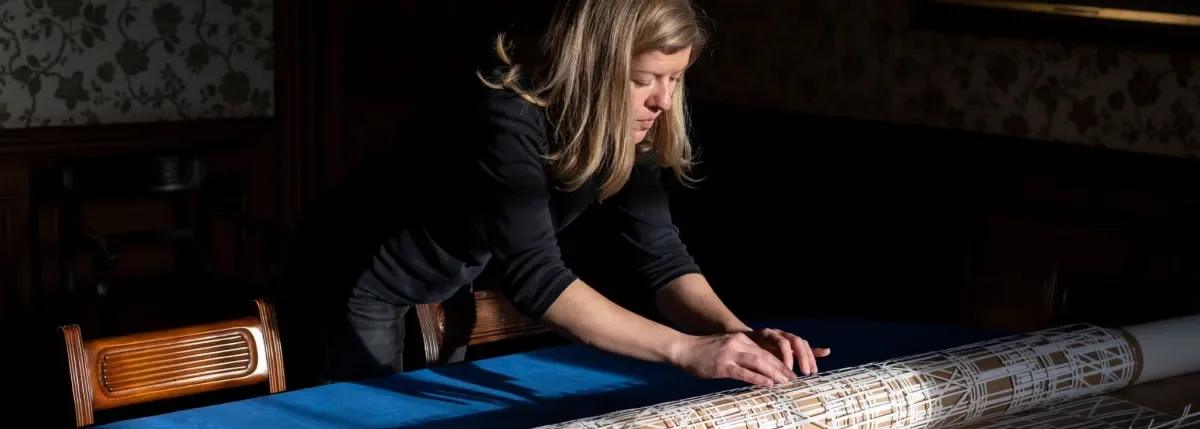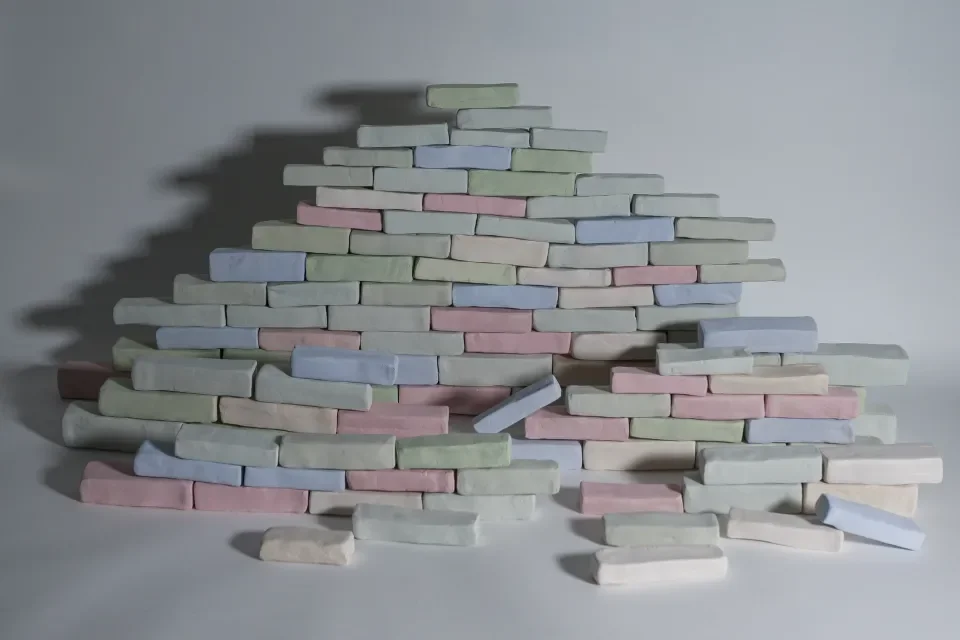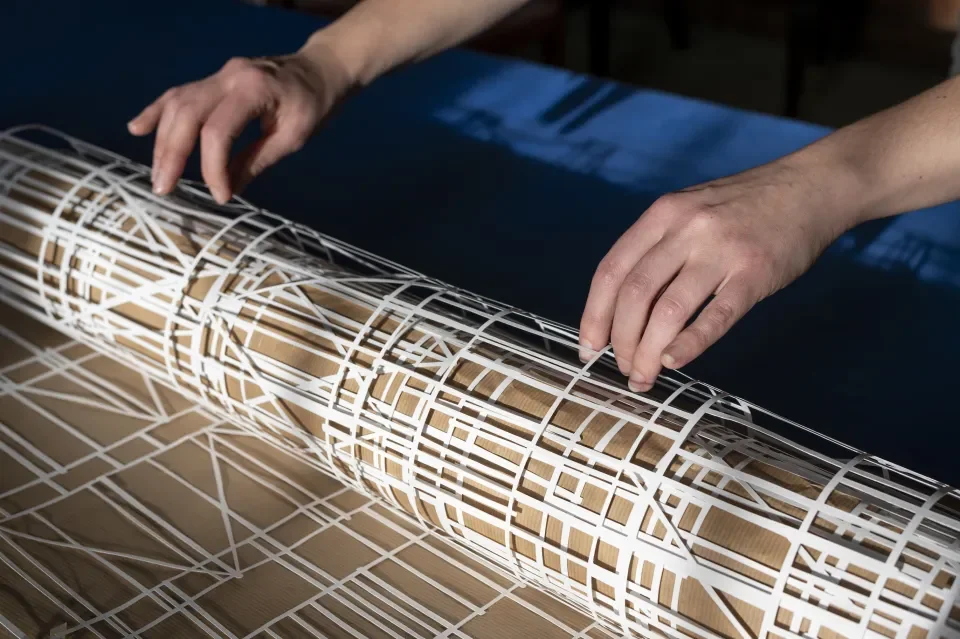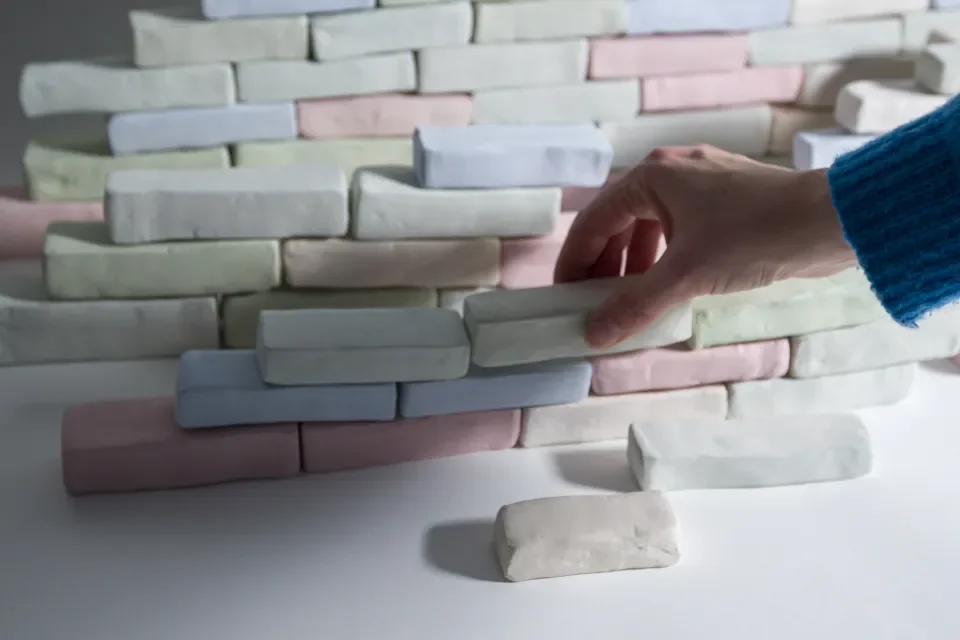
River and Ridge by Susan Leen
River & Ridge is a body of work developed by Susan Leen during her time as DCU Artist in Residence.
The topography of Drumcondra and the human activity through the years are focal points of this exhibition, the work is informed by the research of Dr. Ruth Mc Manus, Associate Professor in Geography and Susan's interest in psychological geography, and how we can be affected by place. The title takes its name from the defining features of the area, the work was made exploring different materials and processes, buoyed by regular meetings and discussions, teasing out the different topics which emerged intuitively from these two different approaches to place.

Susan's work is created as a result of time spent in different geographic locations, exploring sensory geography through expanded drawing practice. Previous residencies include Le Wonder, Paris, Waaw, Senegal, Despina, Brazil, Joya Arte y Ecologia, Spain, Siamsa Tire, Ireland, Banff Centre, Canada and Villa Belleville Paris. She is a recipient of the Arts Council Agility Award 2023.
Susan is a graduate of The National College of Art & Design and Central St. Martins College, London. She has had solo exhibitions in Gallerie les Moulin, France, Gallerie Éthiopiques, Senegal, Siamsa Tiré, Ireland, Kreatori, Brazil, and in group exhibitions in the Le Wonder, Villa Bellville, Irish Cultural Centre France and the Leitrim Sculpture Centre, West Cork Arts Centre, F.E. Mc Williams Gallery in Ireland. She has been awarded grants from the Arts Council Ireland, Culture Ireland, Paris Habitat, the Banff Centre and The Irish Museums Trust. Her work is in private collections in Ireland and abroad.
What are the essential elements that give Drumcondra its unique character?
There are probably as many answers to this question as there are people who live, work or simply pass through Drumcondra.
This exhibition won’t attempt to provide a definitive answer. Rather the intention is to provide one particular lens through which this beautiful-ordinary place can be viewed.
For our collaboration, the point at which things first began to make sense, when it seemed that we had a connection, was with the story of a fingerprint. A last trace of a long-dead person who helped to fire the bricks used to build Belvedere House over 350 years ago. A fingerprint that was preserved by chance, that remains visible to the present day because the brick was laid in the “wrong” direction. The print would normally have been lost, buried in the wall, its owner forgotten in the mists of time. But a chance event means that it survives, reminding us of that past individual who helped to shape one element of Drumcondra’s landscape.
Our project, for me, has been about trying to capture the essence of Drumcondra in a very different way than would be usual or comfortable for me. I’m used to putting words on pages and symbols on maps. I bring students to observe the tangible inheritance of the past inscribed in the present-day landscape – the built fabric of the area. I get excited about interesting lamp standards, unusual roof slates, the glistening of the mica in the granite balustrade of Drumcondra bridge. I tend to be quite literal, quite grounded, in my approach. So to let go of this, to explore this place in an entirely different way with Susan, has been at times daunting, often exciting, and altogether liberating!

Image by Brian Cregan
Susan has an intrinsically geographical mindset. Her way of looking at the world in some aspects mirrors my own, yet is also very different. One thing that we both felt strongly about, as we discussed the project, was the ways in which the different layers of space and time intersect, the idea of landscape as a palimpsest. Within these layers there are some elements which have been forgotten and neglected, there are aspects which are seen and unseen, sometimes the human imprint is ephemeral… and then we have a fingerprint which tangibly links us to a distant ancestor, an individual who stood on this same ground with their own thoughts and dreams…The generations come and go, but some elements are enduring.
The most enduring of all are the elements of the physical landscape which became the title of the exhibition – Ridge and River. The ridge of Drumcondra, Droim Conrach, the rising ground above the river Tolka which has given the area its name. This is where the earliest residents probably lived, as suggested by the archaeological evidence. Some of the most significant buildings in the locality - the St John the Baptist church and graveyard, Drumcondra Castle (now Childvision), Drumcondra House (now All Hallow’s Campus DCU), Belvedere House (now St Patrick’s Campus DCU), Clonturk House – can be found along this ridge. And therefore many pages of the human story of Drumcondra have played out along this elevation, looking south towards the mountains or eastwards toward the Irish Sea.
The mercurial Tolka, generally a peaceful and modest river, occasionally producing devastating floods, is the other constant. It has shaped the area in a physical sense, but also at different periods has served the human population in different ways – by providing provided a water supply, a source of power, an opportunity for bathing both for hygiene and for leisure, an open sewer. Perhaps less well known is the fact that the river has also been reshaped by humans. Once this was in the form of weirs and sluices to direct the water’s power to turn mill wheels, but more dramatically just under a century ago when Griffith Park was laid out the watercourse was significantly modified. More recent flood-relief works have attempted to tame the river – we shall see!

Image by Brian Cregan
In some ways, Drumcondra seems like a mundane place. As an inner suburb which largely evolved in the 19th and early 20th centuries, it may be characterised by its redbrick houses and by the high walls which – until relatively recently at least – hid the many institutions in the locality from the casual passer-by. Part of this project is about revealing the hidden, forgotten or under-represented layers of Drumcondra’s story. It’s also about revelling in the unexpected beauty of everyday spaces, of finding the extraordinary in the ordinary.
The exhibition takes various seams of inspiration and weaves them into a tapestry which takes us on an eclectic journey through space and time. By hanging work on the window we encourage the visitor to pause and engage with the landscape outside as well as the pieces within. These evoke different elements of the landscape and lived experience of Drumcondra – the Tolka itself which provided power for the celebrated linen manufactory, the soil and rock which was used for bricks and building materials, the orchards and plant nurseries which were once a productive element of the landscape. The beautiful Rocque map which appears on the wall is a reminder of the human story which is implied in this work.

Image by Brian Cregan
The people who inspired us include the cartographer, the famous nurseryman, the innovator who came up with a new way of printing patterns on cloth, the lady who was a celebrated correspondent and a botanical artist, the aeronauts who provided Drumcondra with two “firsts” – or almost – with the valiant but failed attempt to cross the Irish Sea by hot air balloon and the first (successful!) parachute jump in Ireland – separated by seven decades and about 700 yards. These last provided inspiration for the element of whimsy, the lightness of the silk representing the balloon and parachute (air), to contrast with the solidity and grounded nature of the bricks and the ridge (earth), and the constant presence of the river flowing through it all (water).
Words by Ruth Mc Manus
